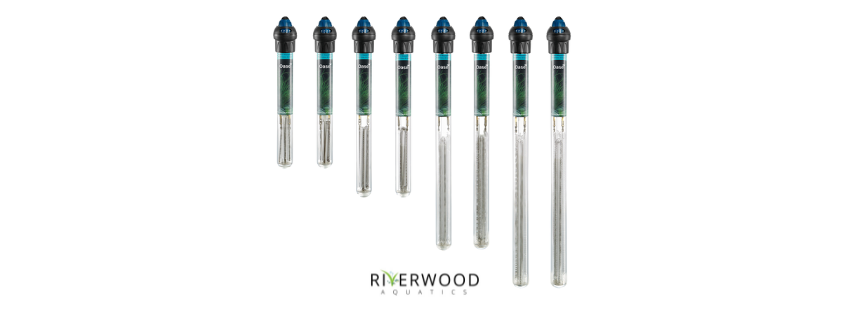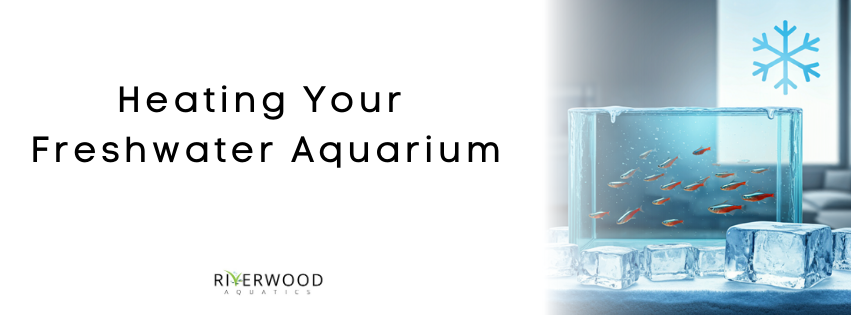Heating Your Freshwater Aquarium: A Guide to Maintaining a Stable Environment
Heating Your Freshwater Aquarium: A Guide to Maintaining a Stable Environment
A stable temperature is one of the most critical factors for the health and well-being of your freshwater aquarium inhabitants. Fish, invertebrates, and plants all have specific temperature requirements that must be met to thrive. Here we will explore the importance of temperature control, how to maintain optimal temperatures, and the potential consequences of neglecting this essential aspect of aquarium care.
Always run a reliable thermometer in the aquarium.
We recommend the OASE DIGITAL THERMOMETER for it’s clear display and accurate reading.
The Importance of Stable Temperature
A stable temperature is crucial for several reasons:
- Metabolism: Fish, invertebrates, and plants have specific metabolic rates that are influenced by temperature. If the temperature fluctuates too much, their metabolic processes can become disrupted, leading to stress, disease, and even death.
- Reproduction: Many fish species have specific temperature requirements for spawning and egg development. If the temperature is not suitable, reproduction may be hindered or prevented.
- Immune System: A stable temperature helps to maintain a healthy immune system in aquarium inhabitants, making them more resistant to diseases and infections.
- Behaviour: Temperature can also affect the behaviour of fish and invertebrates. Some species may become more active or aggressive at higher temperatures, while others may become lethargic or stressed.
Temperature Requirements for Different Species
The ideal temperature range for heating your freshwater aquarium will depend on the specific species of fish, invertebrates, and plants that you are keeping. Some species require warmer temperatures, while others prefer cooler conditions. Here are a few examples:
- Tropical fish: Most tropical fish species thrive in temperatures between 75°F and 85°F (24°C and 29°C).
- Coldwater fish: Coldwater fish, such as goldfish and koi, generally prefer temperatures between 55°F and 70°F (13°C and 21°C).
- Invertebrates: Invertebrates, such as shrimp and snails, may have more specific temperature requirements. For example, cherry shrimp prefer temperatures between 72°F and 78°F (22°C and 26°C).
It is essential to research the specific temperature requirements of the species you plan to keep and choose tank mates that have compatible temperature preferences.
Checking and Maintaining Heaters

A reliable heater is essential for maintaining a stable temperature in your aquarium. It is important to check your heater regularly to ensure that it is working correctly. Look for signs of damage, such as cracks or frayed wires, and listen for any unusual noises.
As the winter months approach, it is particularly important to monitor your heater closely. Cold weather can cause fluctuations in room temperature, which can affect the temperature of your aquarium. If your heater fails to function properly, your fish and other inhabitants could be at risk.
It is also a good idea to have a spare heater on hand, especially during the colder months. If your primary heater fails, you can quickly replace it with the spare, minimizing the risk of temperature fluctuations.
We recommend the OASE HEATUP range of aquarium heaters. These heaters are stable and reliable. Choose a heater with an adjustable thermostat for precise control.
Cooling Down Your Aquarium in Summer
While heating is essential during the colder months, it may be necessary to take steps to cool down your aquarium during the summer. Excessive heat can be harmful to your fish and other inhabitants, so it is important to monitor the temperature and take action if it becomes too high.
Here are a few tips for keeping your aquarium cool during the summer:
- Add a sealed bottle of cold or frozen water: Placing a sealed bottle of cold or frozen water in your aquarium can help to lower the temperature without lowering it too quickly and shocking the fish.
- Increase surface water movement: A stronger current at the surface of the water can help to promote evaporation and cool down the aquarium. You can increase surface water movement by using a powerhead or a wavemaker.
- Open the lid: If the room temperature is significantly lower than the aquarium temperature, opening the lid can help to allow excess heat to escape. However, be cautious about doing this, as it can also lead to increased evaporation and a great risk of fish jumping out.
Temperature control is a critical aspect of freshwater aquarium care. By maintaining a stable temperature and providing suitable conditions for your fish and other inhabitants, you can help to ensure their health, well-being, and longevity. Remember to research the specific temperature requirements of the species you are keeping, monitor your heater regularly, and take steps to cool down your aquarium during the summer months. With proper care and attention, you can create a thriving and enjoyable aquatic environment.
For inspiration, please follow out Instagram page.



